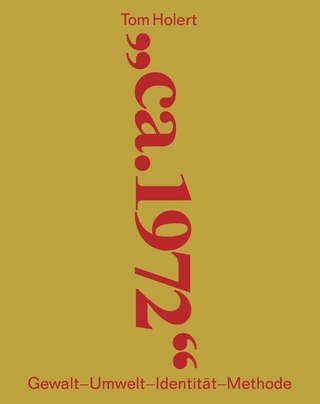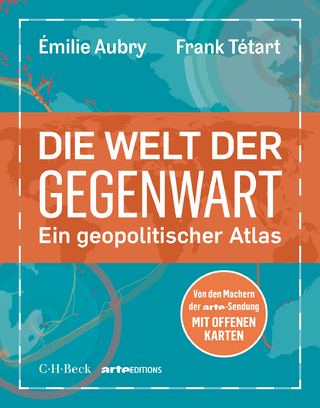
Stalin’s Early Cold War Foreign Policy
Southern Neighbours in the Shadow of Moscow, 1945-1947
Seiten
2022
Routledge (Verlag)
978-1-032-26973-3 (ISBN)
Routledge (Verlag)
978-1-032-26973-3 (ISBN)
Hasanli uses a range of newly available archival sources to unveil key aspects of the Soviet Union’s relations with its southern neighbour in the immediate aftermath of the Second World War.
Immediately after the Allied WW2 victory in Europe, claims were made by the Soviet Union over the eastern regions of Turkey, to secure direct control over the Bosporus, Dardanelles, and Turkish Straits. The detailed study of the international components of these events, featuring the veiled complexities of Stalin’s anti-Turkish diplomacy, provides a key to understanding crucial aspects of these Soviet territorial claims.
Iranian Azerbaijan became another hotspot of post-war confrontation between the western Allies and the USSR: Soviet policy towards Iran manifested in the desire to access their oil resources. A further direction emerging within Soviet post-war strategy was the Kurdish issue in the Near and Middle East. At the conjunction of Turkish and Iranian events, Soviet secret service bodies and diplomatic institutions exploited their strengths and toyed with Kurdish minorities in the region. Their decisions placed the bordering regions of China, Turkey, and Iran squarely in the shadowy reaches of Moscow’s policy.
This research uses newly discovered archive material to illustrate the underlying intrigue behind Soviet ambition and intimately tracks how the Soviet Union was defeated in the first Cold War confrontation over its southern borders. It also links events of this period with the critical issue of Uyghur assimilation, and further contemporary developments highlighting Putin’s policies, making it invaluable for both academic and general readers.
Immediately after the Allied WW2 victory in Europe, claims were made by the Soviet Union over the eastern regions of Turkey, to secure direct control over the Bosporus, Dardanelles, and Turkish Straits. The detailed study of the international components of these events, featuring the veiled complexities of Stalin’s anti-Turkish diplomacy, provides a key to understanding crucial aspects of these Soviet territorial claims.
Iranian Azerbaijan became another hotspot of post-war confrontation between the western Allies and the USSR: Soviet policy towards Iran manifested in the desire to access their oil resources. A further direction emerging within Soviet post-war strategy was the Kurdish issue in the Near and Middle East. At the conjunction of Turkish and Iranian events, Soviet secret service bodies and diplomatic institutions exploited their strengths and toyed with Kurdish minorities in the region. Their decisions placed the bordering regions of China, Turkey, and Iran squarely in the shadowy reaches of Moscow’s policy.
This research uses newly discovered archive material to illustrate the underlying intrigue behind Soviet ambition and intimately tracks how the Soviet Union was defeated in the first Cold War confrontation over its southern borders. It also links events of this period with the critical issue of Uyghur assimilation, and further contemporary developments highlighting Putin’s policies, making it invaluable for both academic and general readers.
Dr. Jamil Hasanli is a research fellow at the SAS – IHR of the University of London. His monographs have been published in the United States, United Kingdom, Azerbaijan, Russia, Turkey, Iran, and Hong Kong. He is an honorary member of the Turkish Historical Society and American Historical Association.
List of Figures
Preface
Acknowledgements
List of Abbreviations
1 Introduction
2 Turkey in the Targets of Soviet Pressure: Eastern Provinces and Straits
3 Stalin’s Expansionist Strategy in Iranian Azerbaijan: Between Oil and Territories
4 Iranian Azerbaijan: The First Test Site of the Cold War
5 Stalin’s Adventure in Eastern Turkestan: Game With China
6 Conclusion
Bibliography
Index
| Erscheinungsdatum | 27.06.2022 |
|---|---|
| Reihe/Serie | Routledge Contemporary Russia and Eastern Europe Series |
| Zusatzinfo | 10 Halftones, black and white; 9 Illustrations, black and white |
| Verlagsort | London |
| Sprache | englisch |
| Maße | 156 x 234 mm |
| Gewicht | 500 g |
| Themenwelt | Geschichte ► Allgemeine Geschichte ► Zeitgeschichte |
| Naturwissenschaften ► Geowissenschaften ► Geografie / Kartografie | |
| Sozialwissenschaften ► Politik / Verwaltung ► Europäische / Internationale Politik | |
| Sozialwissenschaften ► Soziologie ► Spezielle Soziologien | |
| ISBN-10 | 1-032-26973-1 / 1032269731 |
| ISBN-13 | 978-1-032-26973-3 / 9781032269733 |
| Zustand | Neuware |
| Informationen gemäß Produktsicherheitsverordnung (GPSR) | |
| Haben Sie eine Frage zum Produkt? |
Mehr entdecken
aus dem Bereich
aus dem Bereich
Gewalt, Umwelt, Identität, Methode
Buch | Softcover (2024)
Spector Books OHG (Verlag)
36,00 €


